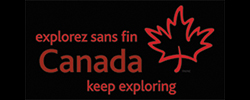Canada’s Northern Rivers
The Northwest Territories has access to seventeen river systems including the Great Bear, Ravens Throat, Redstone, Tischu, Keele, Mountain, Stoneknife, Mackenzie, Natla, Snake, Bonnet Plume, Wind, Arctic Red, Horton, Anderson, Hornaday and Nahanni Rivers. All of these rivers can be easily accessed through Norman Wells except for the Nahanni River that is accessed through Fort Simpson. Eleven of these rivers are situated in the Sahtu. Most of these rivers are suitable for intermediate paddlers. The Mountain, Hornaday, Snake, Lower Horton, Natla, Tischu and Bonnet Plume Rivers are more suitable for advanced paddlers. The Ravens Throat is a rafting river and at this point not clearly a canoeing river. Almost all of these rivers run through either significant mountain or tundra regions and three rivers offer an arctic coast experience. There are significant benefits to these rivers as most offer a preferable two-week trip with incredible scenery, fair and often friendly whitewater, few portages and low levels of black flies and mosquitoes. The Upper Horton offers an excellent novice paddling experience.
Many of these rivers including the Great Bear, Keele, Natla, and Upper Horton offer exceptional fishing for trout and arctic grayling. The Nahanni is certainly the most known river destination in the far north although there are some drawbacks to the river because of the yearly usage of the river takes away some of the remote feel of a wilderness experience and in some water levels, the river is not suitable for other than advanced paddlers or rafters. The Snake, Mountain and Horton Rivers are beginning to gain the interest of a broader paddler base.
The Yukon Territory has access to fourteen major river systems including the Wolf, Yukon, Nisutlin, Teslin, Big Salmon, Pelly, Snake, Bonnet Plume, Wind, Stewart, Hyland, Firth, Tatshenshini and Alsek. Many of these rivers do offer road access to and from the river. The Big Salmon, Yukon, Snake, Bonnet Plume and Tatshenshini Rivers are on avid paddlers lists of rivers to do. These Yukon rivers are primarily suitable for novice paddlers and the scenery is heavily forested with low mountains or mountainous hills and many of these rivers have either no or few portages. The Peel River Basin is the exception with two intermediate rivers, the Snake and Wind, and one advanced river, the Bonnet Plume. These three rivers offer Mackenzie Mountain experiences with lower levels of forested areas and significant mountain ranges. All three of these rivers can be easily accessed from Norman Wells. The access from Norman Wells is significantly less complicated with one air flight in and out whereas from the Yukon, the access is first with a five hour van shuttle before embarking on the air shuttles. The cost of the air shuttle from Norman Wells would be a small amount higher than the Yukon access routes. The Firth, Tatshenshini and Alsek Rivers are primarily rafting rivers with difficult whitewater sections not suitable for canoe tripping.
Nunavut has access to seven river systems including the Coppermine, Burnside, Hood, Back and Thelon, Kazan and Soper. All of these rivers are accessed from Yellowknife except for the Soper that is accessed from Iqaluit. Many of these rivers are on avid paddlers lists of rivers to do but the air shuttle costs, the remoteness, the longer length of trips (3 weeks), the level of portaging and the mosquitoes and black flies levels make these rivers less desirable to the paddling public. There is a significant interest among paddlers to have access to rivers such as the Coppermine, Burnside, Hood, Back and Soper that take them to the arctic coast.


